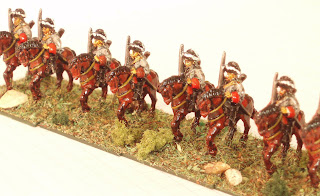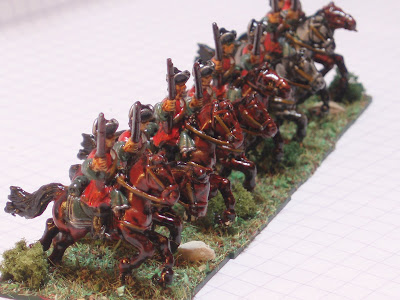The holiday is fast approaching, and those of you who have been browsing here for a while will know that when on holiday I do have an interest in dragging my family kicking and screaming to the nearest site of military interest – even if only once! 😀
These trips are invariably fraught with some danger or another, usually the weather – it either howls it down with rain, or is so hot that even the locals are passing out with heat exhaustion. Last year you may remember I dragged them off to
Bayonne and we were not "disappointed" - Bayonne is beautiful, but the weather was of the former persuasion (in fact to be honest we came back from that holiday with webbed feet and hands!)
This year I'm hoping to be able to drag them off to St. Nazaire as, for many years, I've had an interest in visiting the site of "Operation Chariot", also known as the St. Nazaire Raid. Chariot was a Second World War operation to deny the Germans the use of the only dry dock on the Atlantic coast big enough to take Tirpitz or Bismark.
Luckily most of the original features are still in place, so if I start my usual amble with the following pictures which are from Multimap, and are current:
First, this is the entrance of the Loire - the dock at St. Nazaire is in the red box..

Second - this is the dock area itself (the red box in the previous picture basically):

I'll refer to the various highlighted features as I describe briefly what happened - I'm not going to go into huge detail as there are a number of very (very) good websites that go into huge detail on the raid, including video and photo's of the place and participants...
In summary though, the German defences at St. Nazaire were considered the toughest in western France after only those of Brest. Both sides of the Loire estuary approach (see first map) were heavily fortified, and armed with amongst other things 150 mm howitzers, 170 mm guns, 75 mm guns, 88 mm guns, and 20 mm or 40 mm cannon. There were even two 240 mm (!!) railway guns.
In the harbour area itself there were around thirty single 20 mm guns, two quad 20 mm guns, approximately fifteen 40 mm guns, and a flakship just off the new port.
The garrison numbered about 6,000 men (including the artillery crew)
The British plan relied on surprise to succeed but basically a flotilla of shallow draft boats (MTB's and a destroyer) were to race up the Loire, while the German defenders were distracted by an air raid put on by the RAF. The destroyer was packed with tons of explosives, and would then be rammed into the dock gates (bottom of the red box in the docks map), scuttled, time fuses set for destruction some hours later, while commando's carried on the destroyer and the MTB's would disembark to destroy other targets in the area - these latter ships would land troops on a feature called the old mole (blue box in the map). Once the attack was complete, the British were then to regroup on the mole before making their escape on the other ships in the flotilla. Altogether the raiding party numbered 600 men.
Speed was key, but in addition the destroyer (a US lend-lease ship called USS Buchanan, renamed HMS Campbeltown) was physically modified to resemble a German destroyer. Captured code books allowed the ships to respond to shore based signals and the plan was to appear as if they were a returning convoy.
The attack started with the RAF raid which was particularly ineffective (Churchill ordered them to minimise the possibility of civilian casualties, and the RAF reduced the number of planes due to conflicting requirements from other raids/missions). The flotilla wasn't spotted until it was about a mile and a half away from the docks, but the false signals and a kriegsmarine flag on Campbeltown, resulted in them getting just over half a mile closer - the Germans then opened fire in earnest and Campbeltown hoisted the white ensign (there's no record of it but I like to think they may have let of the ships sirens at the same time - that bit at the end of "Battle of the River Plate" always stands the hair on the back of my neck on end!)

Campbeltown rammed the end of the docks at about 01:34, and was moving so fast that it crumpled in about 40 feet of the front of the ship - the commando's were disembarked and they completed their mission to destroy various pieces of equipment to do with the docks (pumping stations, engines, etc.) before withdrawing to the mole as planned.
The other ships weren't so successful - these were mostly lightly armoured MTB's and a number of them were destroyed before they managed to land their commando's on the mole. In the end, very few commando's were landed, and none to the mole. Not good when this was supposed to be the embarkation point for the rest of the force.....
In the end, the remaining MTB's picked up who they could (usually from other sinking boats, or from the water) and escaped as best they could - leaving behind approximately a 100 commando's in the docks. Under constant fire from the shore based guns, in the end four MTB's made it back to the destroyer escort off the mouth of the Loire. Two of these were abandoned due to damage, and the remaining two were scuttled when the destroyers came under air attack on the way back.
The commando's left behind in the docks and elsewhere, tried a break out, but in the end were surrounded, and captured - British casualties totalled 169, with 200 captured (but apparently 5 did manage to escape the encirclement and make it to Gibraltar!); German casualties were 42 killed and 127 wounded..
This last bit is unedited from Wikipedia entry (it deserves to be read unedited)
"The Campbeltown's charges were timed to go off at around 0900 hrs at the latest. Meanwhile, a German search of the ship failed to discover the hidden explosives. The detonation time came and went. During this delay, senior German officers arrived to inspect the damage and were photographed on deck. They were accompanied to the dock by two Commando officers who had been taken prisoner. The captured officers knew what was about to happen but remained silent, allowing themselves to be killed rather than give the Germans an opportunity to defuse the explosives. It was not until 1035 hrs that the Campbeltown finally exploded, destroying the caisson and killing about 250 German soldiers and civilians in the immediate area".
..suffice to say that this was a most dramatic and heroic raid (a total of 5 Victoria Crosses were won!), but it was won only after huge sacrifice; is it any wonder that I find military history so fascinating?! Unlike the Dieppe raid earlier in the war, it was undoubtedly a huge success though, the dock (the primary target) was severely damaged and remained unusable until 1947.
Can't wait to go and see it - not only is the dock and the mole still there, but you can also still see the U-Boat pens (yellow box in the docks map) - in fact I think there is a museum in one of the end pens.
Further reading (and I particularly recommend the second one):
http://www.combinedops.com/St%20Nazaire.htmhttp://www.stnazairesociety.org/Pages/index.htmlhttp://www.jamesgdorrian.com/
 11:00 (Day 3)..
11:00 (Day 3).. ...and this is the composite view of where everyone is....
...and this is the composite view of where everyone is.... ...more anon...
...more anon...








































